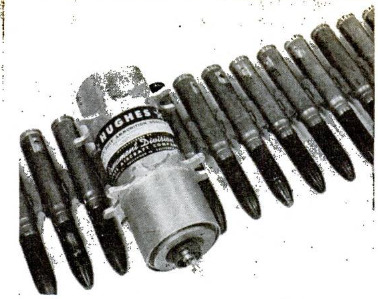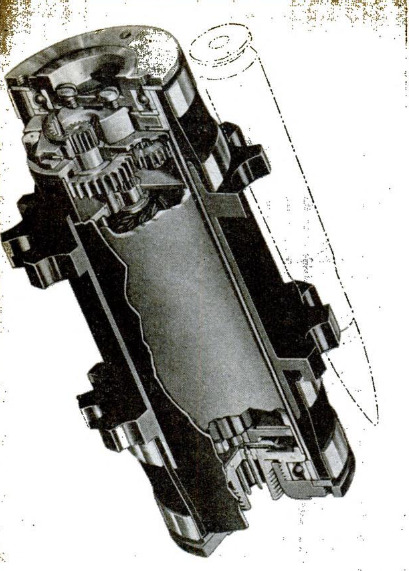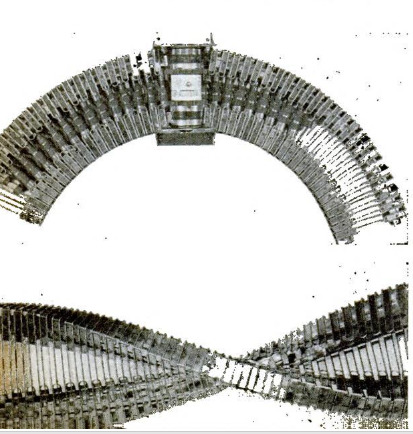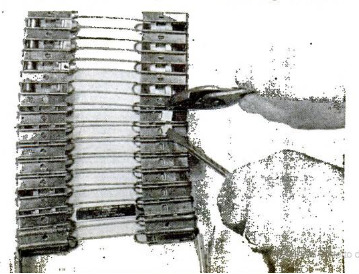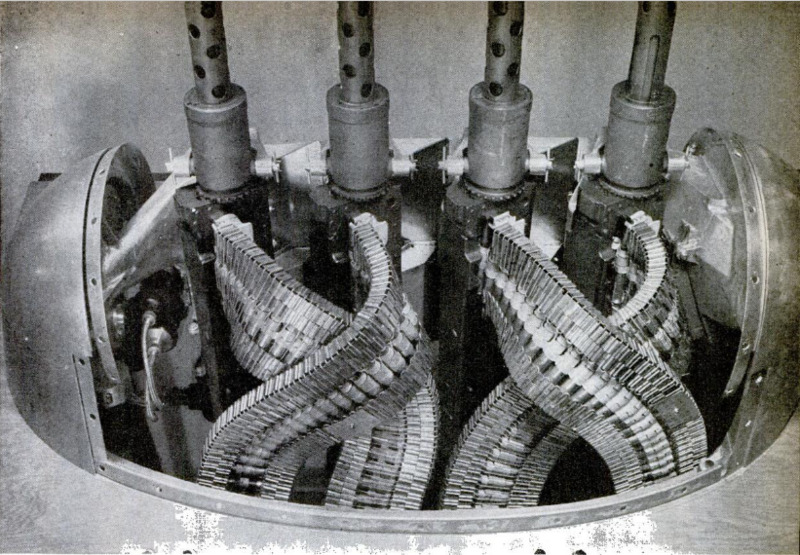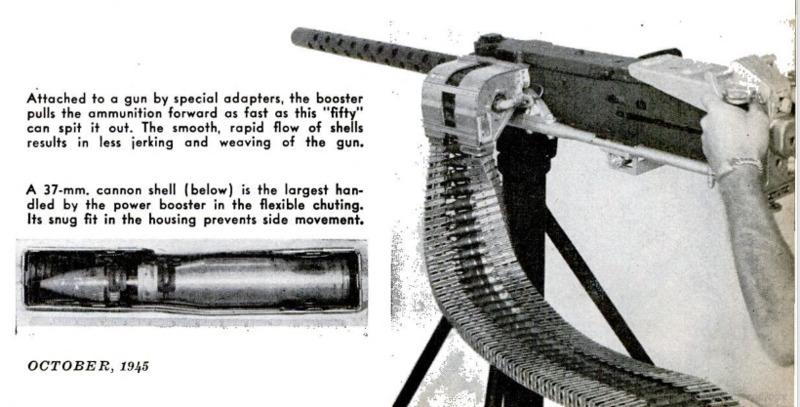How it can be told forced feeding of gun boosts plane firepower
Item
-
Title (Dublin Core)
-
How it can be told forced feeding of gun boosts plane firepower
-
Article Title and/or Image Caption (Dublin Core)
-
Title: How it can be told forced feeding of gun boosts plane firepower
-
extracted text (Extract Text)
-
THE wraps have been taken off two clever
but simple devices that speed ammunition
into airplane guns as fast and as surely as
the weapons can pour it out. Developed by
engineers of the Hughes Aircraft Company,
Culver City, Calif., they consist of flexible,
stainless-steel chuting and a tiny, freewheel-
ing electrical gadget called a booster. To-
gether, they smooth the flow of shells, from
.50 caliber to 37 millimeter, into machine
guns and cannon, feeding the “fifties” at the
rate of 1,000 rounds a minute.
The chuting is a series of interlocking
links, whose interiors fit the form of the
cartridges -and which are so joined as to
form two narrow tracks of smooth, stain-
less steel at each end of the cartridges.
Fully extended, the chute contains 14 links
per foot, and it can be compressed, twisted,
and turned without snagging the shells be-
ing channeled through it.
The booster, which weighs one pound, 11
ounces, has two integral sprockets that are
revolved through reduction gears by a 1/10-
hp., direct-current, 10,000-r.p.m. motor. Con-
nected in conformity with the gun-firing
circuit, the booster turns on its power when
the gunner hits the trigger and moves the
ammunition forward at a rate equal to the
cyclic rate of the gun.
The shortest chute to see service con-
nected an ammunition box to a gun through
only three links. The longest, 280 links,
fed “ammo” to a weapon in a big bomber.
-
Contributor (Dublin Core)
-
Andrew R. Boone (article writer)
-
Language (Dublin Core)
-
Eng
-
Date Issued (Dublin Core)
-
1945-10
-
pages (Bibliographic Ontology)
-
132-133
-
Rights (Dublin Core)
-
Public domain
-
Archived by (Dublin Core)
-
Sami Akbiyik
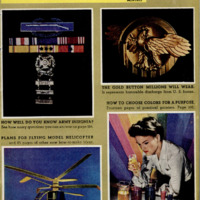 Popular Science Monthly, v. 147, n. 4, 1945
Popular Science Monthly, v. 147, n. 4, 1945

